The highlight of our visit to the Victorias Milling Co. (VICMICO) was the Chapel of St. Joseph the Worker, an artistic landmark in the Western Visayas that heralded the birth of Filipino religious art in the country. This modern and futuristic church, also called the Ossorio Chapel, was designed by New York architect Anthony Raymond (an apprentice of the great American architect Frank Lloyd Wright) and was built, on the site of the old factory, from 1948 to 1949. Earthquake-proof, its tower and nave are connected by movable beams.
This Chapel, built for VMC personnel and their families, was once featured in Life Magazine (as well as Liturgical Art Magazine) as “The Church of the Angry Christ.” It features mosaic panels formed with bits of broken bottles of soda, milk of magnesia and other colored bottles gathered by parishioners.
A symbol of avant garde art, it depicts the angry Christ (God the Son), with a flaming heart and seated on skulls and a serpent (which represents death), on Judgment Day with big eyes and long, outstretched hands (symbolizing His welcoming of the faithful who were called to this continual last judgment), being received by God the Father, represented by 2 huge, red-orange hands. The Holy Spirit, represented by a descending dove with multi-colored wings, hangs above. All over the place are multi-colored angels.
Christ is flanked by brown-skinned Filipinized saints in native attire, standing as witness to Christ’s resurrection – St. Joseph and the St. John the Baptist on the left and Mary and St. John the Evangelist on the right. The first Filipinism in liturgical art, its singular rendition of brown-skinned Filipinos as Catholic saints has deliberately “Filipinized” traditional Biblical themes, thus giving it a Filipino face.
The controversial altar mural, done in a psychedelic splash of primary colors, was also criticized in the 1950s because of its solid, vibrant colors and striking brush strokes. It also created a stir in conservative church circles for its depiction of Jesus Christ as angry and fierce-looking, instead of a merciful and gentle god. The altar’s beam has a triangle with an overseeing eye, looking at those who are called – the faithful attending the mass.
Belgian-born American liturgical artist Adelaide “Ade” de Buthune, the Baroness of Schaerbeek, assisted by Romulo Sta. Ana, was commissioned to decorate the baptistery (depicting Christ being baptized as a Filipino), the tabernacle, the mosaic outer walls (particularly the mosaic of Joseph’s wedding to Mary) and murals at the back.
Local engraver Arcadio Anore executed Bethune’s designs for the brass plates decorating the pulpit, baptistery and other parts of the church. Local artist Benjamin Valenciano, a carpenter from Victorias, did the the crucifix, the Stations of the Cross and the images of Joseph and Mary, garbed as ordinary brown-skinned Filipinos.
Philippine-born American abstract expressionist Alfonso A. Ossorio, the New York-based artist son of Don Miguel Ossorio, did the mural decoration of the altar within 11 months. Alfonso studied Fine Arts at Harvard University (Cambridge, Massachussets, U.S.A.) and continued his studies at the Rhode Island School of Design. Among his friends were the famous abstract expressionist artists Jackson Pollock and Clyfford Still.
As painting medium, Alfonso used ethyl silicate 40, recommended to him by Ralph Mayer, a paint chemist, as appropriate for the tropics as it fghts humidity and withstands the dampness. Up to now, the murals have not been retouched and their bright colors still looks magnificent.
The front facade of the church has a mural showing three scenes from the life of St. Joseph – the marriage to Mary, the workshop at Nazareth, and the death of Joseph. There;s also the comic-like painting outside depicting “The Prodigal Son” (believed to be a pioneering work on the comics art in the Philippines) while the back of the church depicts “The Last Supper” and “The Virgin Mary with the Holy Spirit.”
Outside the church is a Carabao Sundial, built in December 1975 by Senior Machine Shop students of Don Bosco Institute, led by Hezekiah B. Katalbas and Vicente Gonzaga, with the assistance of VMC management. Its horn is exaggerated to become the dial face.
As it features the works of world famous artists, this chapel should be protected and preserved for other generations to appreciate and, to ensure its preservation, it should be declared as a National Heritage Site or National Cultural Treasure.
Church of St. Joseph the Worker: Victorias Milling Co. (VICMICO), Victorias City, Negros Occidental.
How to Get There: Victorias City is located 34 kms. (a 45-min. bus or jeepney drive) northeast of Bacolod City. Upon reaching the intersection of the National Highway and the road leading to VMC, hire a tricycle that goes straight to the church.

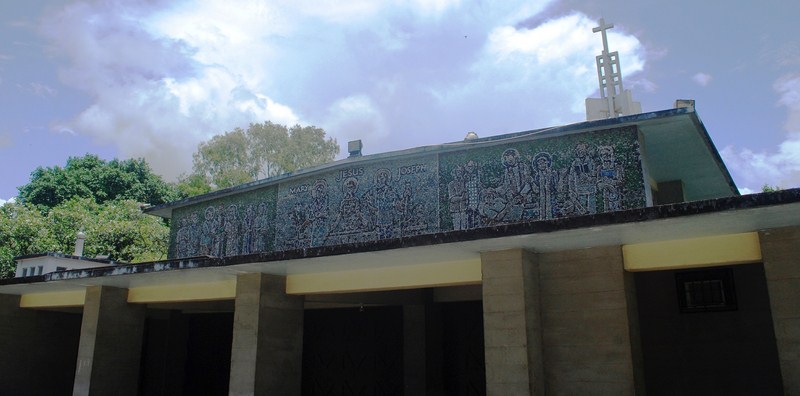
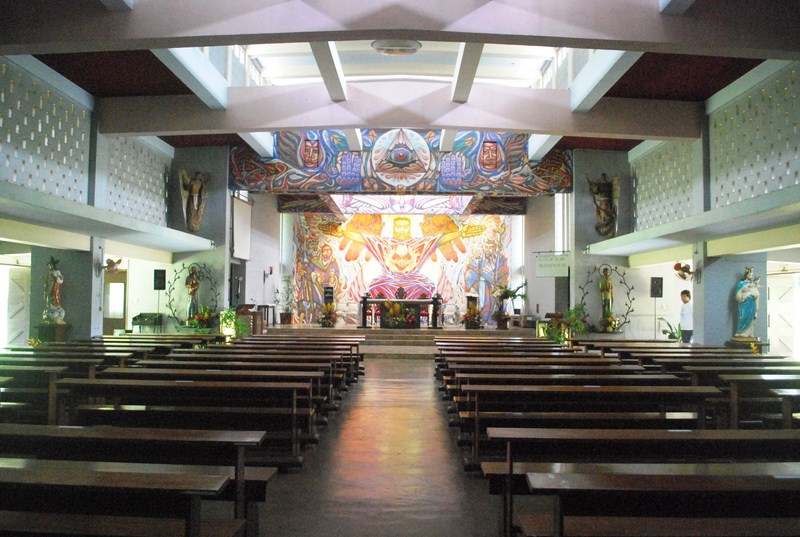
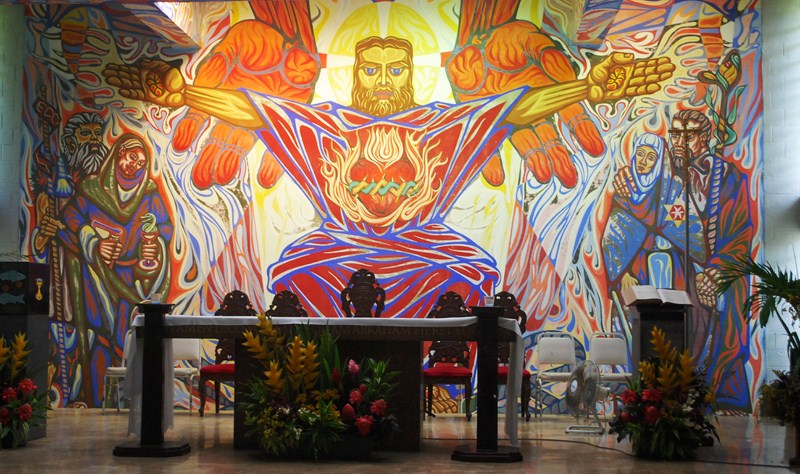
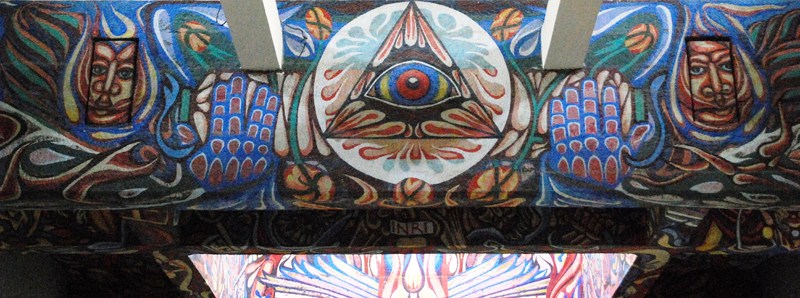
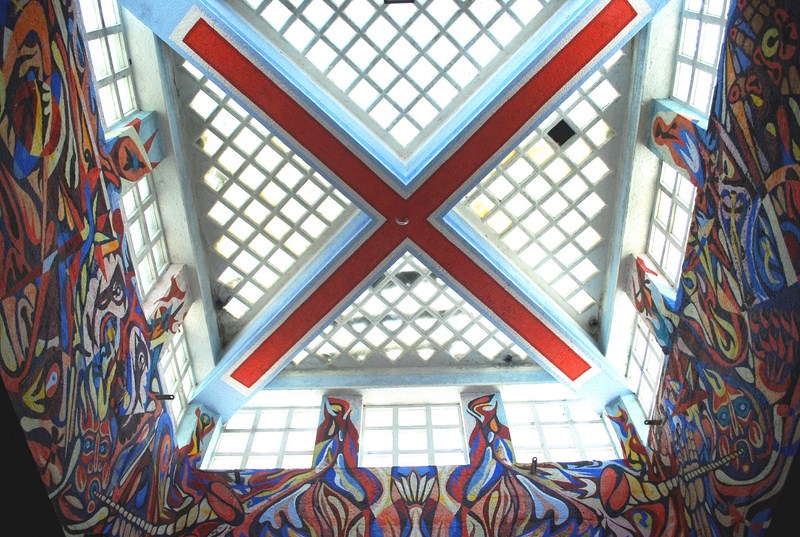
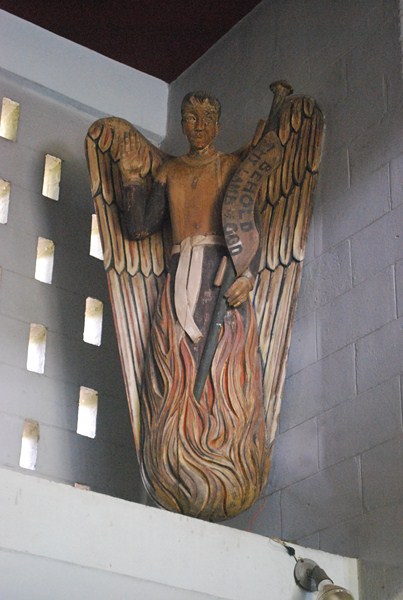
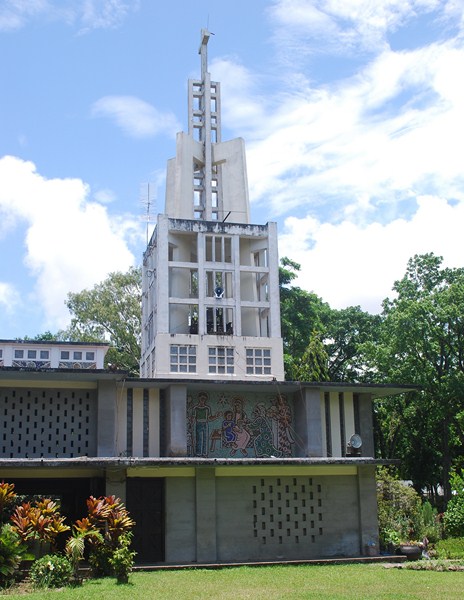

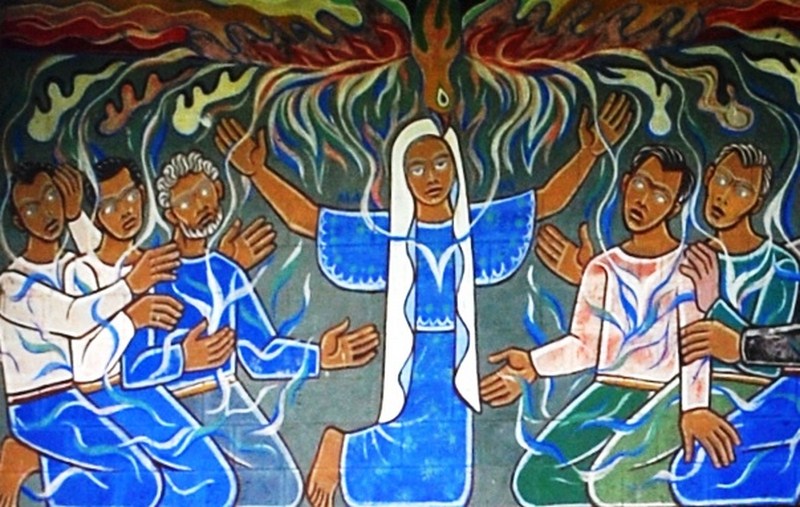
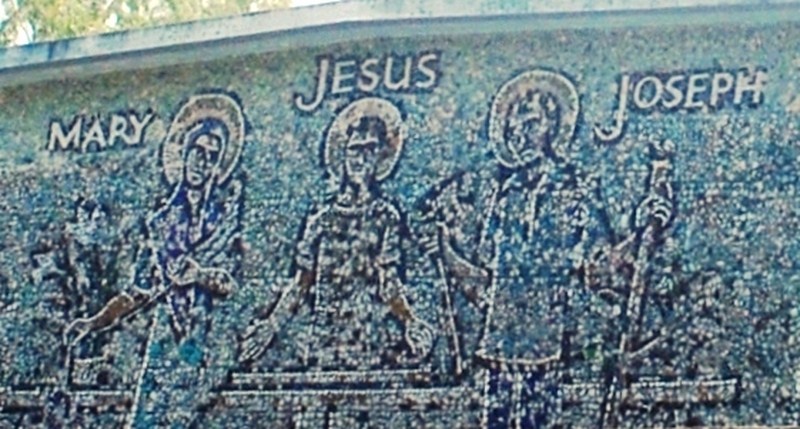
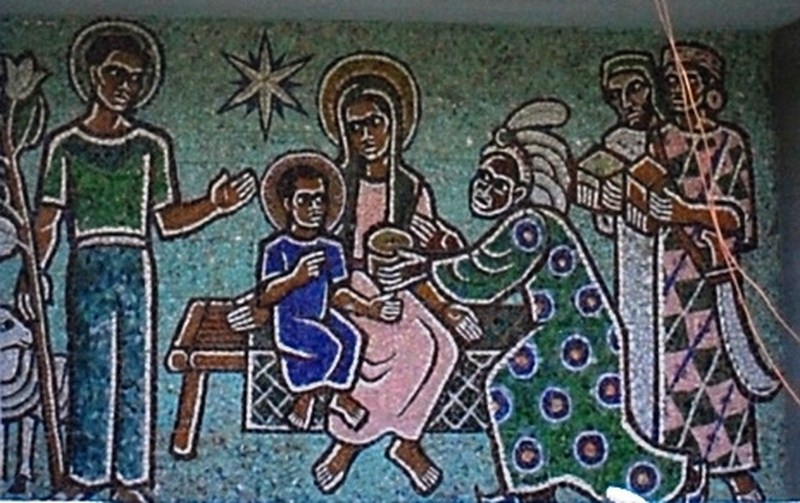
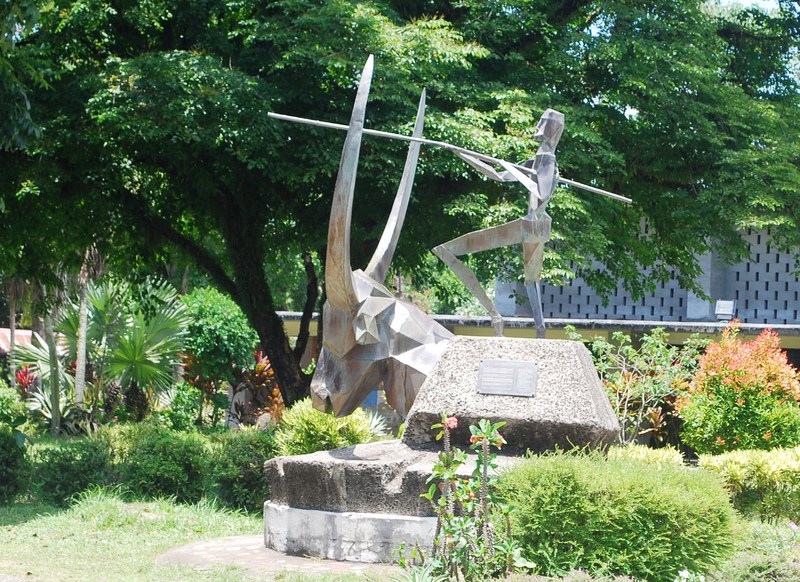
Need someone who could help me get my baptismal certificate at st. joseph church in victorias negros occidental for my wedding requirement i am now based here in manila hoping someone could help me process it for me if ever u may contact me at ney18ven@yahoo.com thank u in advance
What is the complete Area of the St. Joseph ? Thanks
Sorry. I do not have that information
Hi Benjie!
Pretty awesome blog about your visit to St. Joseph the worker chapel and highlights on the mural of the last judgement 🙂 maybe you’d like to watch an original play about it at UP Diliman? Its entitled the Angry Christ, playwright by Floy Quintos and directed by Dexter M. Santos. If you’re interested to watch the play check out our facebook page at https://web.facebook.com/DulaangUnibersidadNgPilipinas/ 🙂 Thank you and God Bless!
It’s been a long time since I watched a play in my alma mater